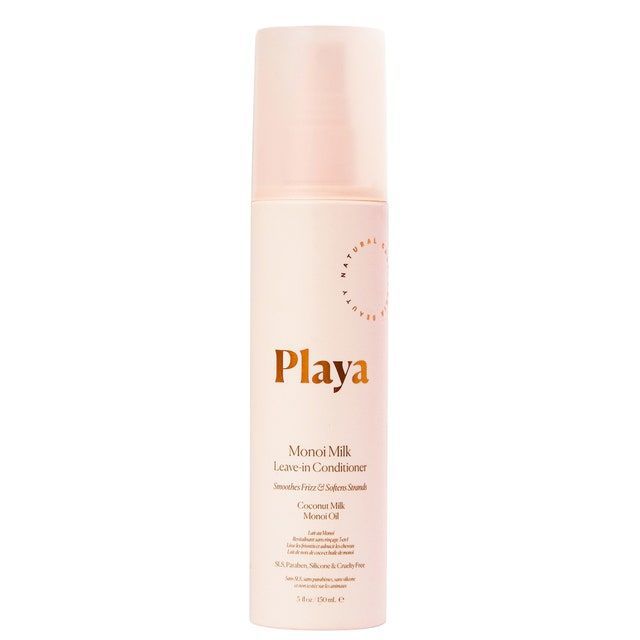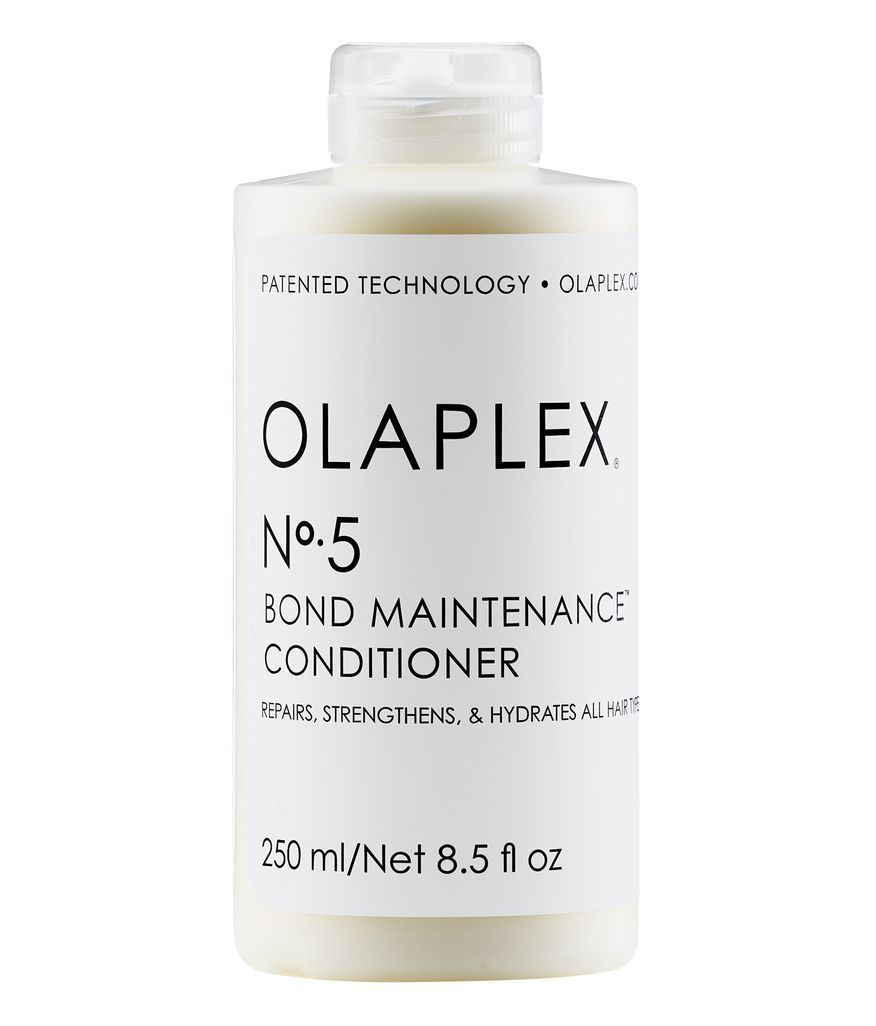How to Actually Eliminate Split Ends — Once and For All
As the old adage goes: the only two things in life that are certain are death and taxes. Well, whoever came up with that line clearly wasn't paying attention to their hair, because split ends are an ironclad fact of life and a truly great equalizer of humankind.
Everyone’s bound to get them, no matter your hair texture, color, or length, because simply living is the main culprit, according to celebrity hairstylist Annagjid “Kee” Taylor, the mastermind behind some of Keke Palmer and Tiffany Haddish's best hairstyles.
“But if you're not taking care of your hair, your ends will split a lot faster,” she adds.
Once you start to see those telltale red flags — your hair becomes more prone to tangles, feels dry and coarse, or as Taylor says, "[when] you comb your hair and little short pieces are falling all over" — it's because your hair is breaking. At that point, only a snip from a good pair of sheers will save your strands.
On the flip side, however, since the whole split ends problem affects nearly everyone on the planet, there’s an avalanche of nourishing and reparative haircare products available to ensure hair stays healthy from root to tip for as long as possible.
Here, we consulted with two of the best hairstylists around to find out more about their favorite treatments, and to see what tips they can offer up to keep breakage at bay.
Use a Hair Mask on the Regular
According to Larry Sims, the hairstylist Gabrielle Union-Wade and Regina King have on speed dial, the ends are “always the most unhealthy part of your hair” and “the driest part, for sure” but there is a fast-track fix for these troublemakers.
To give your ends the hydration they crave, integrating a deep conditioning mask into your regular wash day routine is crucial for all hair types, but especially for those with naturally curly and coily hair.
“Curlier hair tends to be more dry just in general because of the make up of the hair strand and cuticle,” says Sims, who always reaches for the Flawless by Gabrielle Union Repairing Deep Conditioning Masque. “It’s moisture, moisture, moisture for curly hair.”
To shop: $10; sallybeauty.com
Sims recommends masking natural hair every shampoo day. But the most important thing is to stay consistent.
However, if you have thin or fine hair, opt for a light hot oil treatment once a week to seal moisture into the cuticle. “It rinses off not totally squeaky clean, but light enough so that fine hair doesn’t feel weighed down and you still get all the nutrients and the moisture,” says Sims.
You’re Going to Need a Leave-In
Who doesn’t love some good set-it-and-forget-it action? To get your day started, liberally spritz a moisturizing leave-in conditioner on your ends. And make sure it's packed with protective powerhouse ingredients, like proteins, fatty omegas and oils, which you can all find in Playa’s Monoi Milk.
To shop: $24; sephora.com
“Leave-ins are lightweight and super moisturizing,” says Sims. “They’re great for people who want to do blow outs, and it’s also great for people that rock their hair curly and natural, kind of like wash-and-go type of girls.”
For oil-prone hair types, apply from mid-shaft to ends and avoid the roots to avoid a greasy-looking finish.
Cool It With the Hot Tools
In news that should shock no one, both Taylor and Sims are passionate about putting down the hot tools.
"Excessive amounts of heat from blow dryers, flat irons, curling irons will cause ends to split faster,” says Sims. Instead, he says try air drying if you can.
In fact, hot tools can be so damaging to hair follicles that Taylor, a self-confessed former "heat girl," says people with natural curls should only be using heat once every six months, while those with straight hair can indulge once a month.
Double Check Your Product’s Ingredient List
Strong hair is way less prone to breakage, and building strength begins with using a super restorative shampoo and conditioner. And it's always a good idea to go with a cult-favorite line, namely Olaplex, which was specifically designed to treat and strengthen damaged hair by re-linking broken bonds.
To shop: $28; sephora.com
To shop: $28; sephora.com
“Our hair is basically made of a protein: keratin,” explains Sims. “You really want to make sure that you’re using protein-building products to essentially saturate the hair cuticle, rebuild it, and restrengthen it, so that you are less likely to have those same sorts of hiccups in terms of split ends.”
Two key ingredients to look for in hair strengthening products are biotin and creatine, which Sims says are “specifically intended to rebuild and repair the hair shaft” from current damage. They also fortify fragile hair from common strand stressors that cause dead ends, like color or chemical treatments and seasonal changes (dry winter air is a friend to no one).
Rethink Your Wash Day Routine
One of the most simple and efficient hacks to boost hydration and absorption is to shampoo and condition your hair as soon as you step into the shower. Then let the conditioner sit while you wash your body and do your thing.
“That’s what I do,” says Taylor. “I’ll wash my hair, condition it, leave the conditioner sitting while I wash up and then I rinse it out.”
To really maximize shower time, Taylor suggests popping a plastic shower cap over conditioned hair for the rest of your shower. “[The] heat that comes from your scalp can activate the conditioner even more,” she shares.
VIDEO: How to Get Meghan Markle's Signature Messy Low Bun
Hair Oil Is Your Friend
For frizzy, rough-looking strands that need some extra love, coat the ends of dry or wet hair with an intensely hydrating oil, like an almond, argan, or jojoba oil, in pure or blended form. These all help to soothe and smooth out hair, while also protecting against further damage.
“Even though oils can’t reverse an already split end, it will help seal the [healthy] hair and keep it nourished all the way down to the end,” says Taylor, who suggests using oil-based masks and conditioners for their emollient properties.
But keep in mind that oils are potent, so start small with a pea-sized amount and apply it just to the ends, especially when using it on dry hair. You can also work it through combed, wet ends and put your hair in a braid or bun to give your strands a shot of hydration and really lock in the goodness.
Switch Up Your Routine For the Season
Where you live plays a huge role in the type of haircare products to use — and they should all be rotated out seasonally. Winter’s dry, cold air is notoriously harsh, especially on natural hair, but the summer sun can also do some damage.
“A lot of people don’t think about how drying the summer is for hair because there can be so much humidity, but the sun and heat strips hair,” Taylor reminds us.
To combat the inevitable lack of moisture during both summer and winter, load up on formulas with a cocktail of extra-hydrating ingredients, like honey, rich oils, and hyaluronic acid, to keep strands resilient and strong. For fall and spring, focus on restoring and strengthening damaged and weakened hair.
And it goes without saying that hot tools should definitely hit the road during the harsher months, especially for super curly 3A to 4C hair types. "Lean into your natural texture and wear styles that are more protective,” Sims suggests for colder months. Braided or twisted styles are most ideal during these times.
Be Careful When Wet
“One thing about the hair, is it's weaker when it's wet, so you want to make sure that when you're handling wet hair, you're being as gentle as possible, no matter the hair type,” says Taylor, who swears by always using a wide tooth comb, and never a paddle brush to detangle, working from the ends up. “And always take your time when you're brushing hair, because the smallest tug can break your ends, too,” she advises once the hair is dry.
But, If You Want to Get Wild…
Take advantage of the low stakes work-from-home environment and have some fun playing with your hair’s natural texture.
“[Try out] different variations of yourself without feeling pressured to look a certain way,” says Sims. “As long as we’re in this pandemic, we don’t have to feel the pressures of making sure that we are ‘presentable’ with these ideologies of what is deemed to be appropriate with our hair and presentation.”
Rock a headband or a snazzy barrette, or really just go for it and weave Sims’ favorite hair accessories, like jewels, ribbons, and fabric, into braids for a festival-inspired vibe, or give modern-looking beads a whirl.
“Beads are really, really cool these days, I love a good bead,” he says. “I’m always a fan of going to Michael’s and grabbing a bunch of materials, even metals.”
Be fearless with your style right now, Sims urges, because, “Why not? That’s what I say.”
Source: Read Full Article




